Last night the wind kept me awake. It reminded me of the people and animals in Lahina who lost their lives and homes. Perhaps this wind is a precursor to the 6th extinction period. Plastic pollution also preoccupies my mind, and I’ve witnessed ocean plastic pollution on a personal level. What I saw haunts me.
Several years ago, a movement began to ban single-use plastics and made the plastic bag the scapegoat. It’s a laughable attempt. Our oceans have five massive gyres like the Great Pacific Garbage Patch, which they say is twice the size of Texas.
The Environmental Protection Agency, EPA says, “They’re working to address ocean pollution.” As if they just received a memo that plastic pollution is an issue. It’s private initiatives that are impacting change.
Top 10 Keys Facts About Plastic Pollution
- Almost 400 million tons of plastic waste is produced annually
- In the US, the total plastic waste generation was 73 million metric tonnes in 2019
- Annually 70,000 of microplastics is ingested by a single person
- Stat shows the global primary plastic production will hit 1,100 million tonnes by 2050
- Around 75 to 199 million tonnes of plastic is present in oceans
- By 2050 there could be more plastic than fish in the ocean
- Philippines add 36% of the global plastic waste in the ocean
- By 2050, plastic production and disposal might emit as much greenhouse gas as 615 coal plants
- Less than 10% of the plastic produced in regenerated
- The annual value lost in plastic packaging waste is almost US$ 80-120 billion
Facts About Plastic Pollution
It’s difficult to imagine one million plastic bottles, yet that figure is a proverbial drop in the bucket. Marine animals and birds are eating plastic and dying from it. That’s a fact.
Globally Around 7 Billion Tonnes of Plastic Exist (UNEP)
United Nations Environment Protection issued a devastating report. We produce 400 million tons of plastic yearly. According to the math, we’ve produced 7 billion tonnes of plastic since the 1950s. It takes 500 to 1000 years for plastic to decompose (it never goes away), and it impacts our food chain.
Almost 400 Million Tons of Plastic Waste Is Produced Annually (UNEP)

That 400 million tons are from water, soda, detergents, shampoos, food products, and other toiletries sold in plastic bottles, toys, and gadgets. Did you know that only 9% of these 400 million tons are repurposed? Only 15% is collected in our bins. Where does the plastic go?
In the US Alone, the Total Plastic Waste Generation Reached 73 Million Metric Tonnes in 2019 (OECD)
Plastic is difficult to outrun. The USA is a prosperous country, and plastic waste per resident is an estimated 221kg (496 lbs). That’s five times the global average.
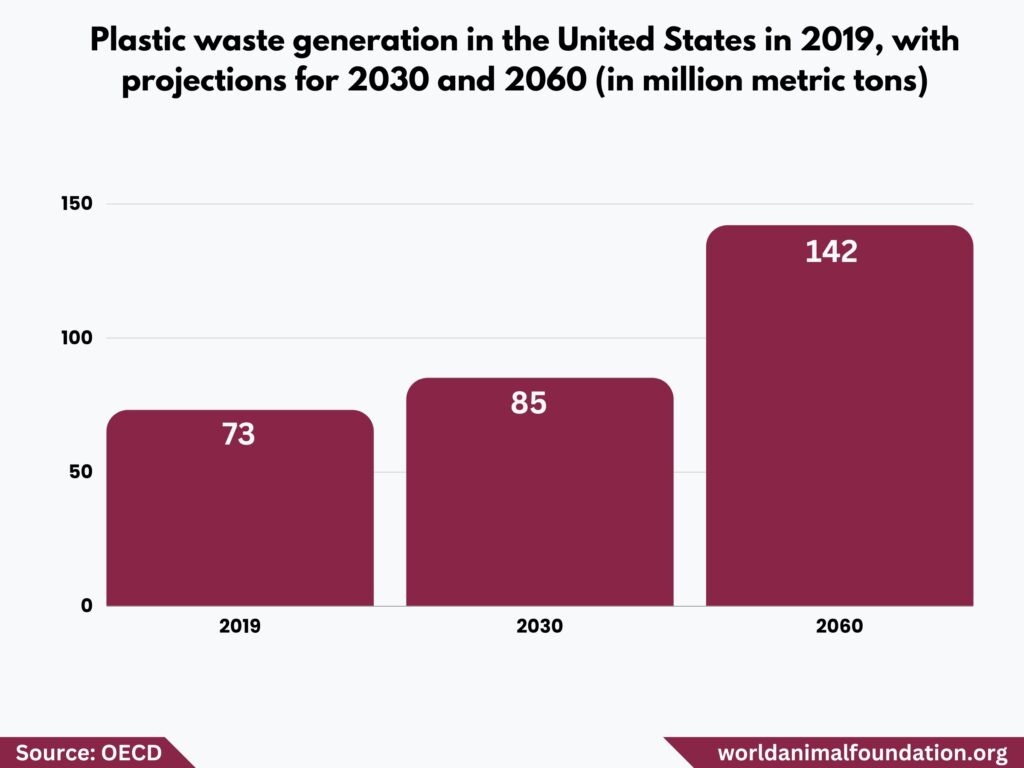
Annually 70,000 Microplastics Are Ingested by a Single Human Being (Global Citizen)
Humans eat plastic unknowingly. A UK- research team experimented with the dinner table of three families and found that after a 20-minute lapse, their petri dish collected 14 microplastics–yum! Did you want fries with that?
From the 1970s to the 1990s, Plastic Waste Generation Tripled Alongside a Rise in Plastic Production (UNEP)

Plastic was invented in 1907. Plastic brands like Tupperware didn’t become mainstream until the 1950s and 1960. Between 1970 o to 1990, companies explored the use of plastic, and use tripled. During that time, plastic took off because it was cheap, considered sanitary, and multifunctional. Coke and Pepsi switched from glass to plastic in 1978.
During the Early 2000s, More Plastic Was Produced Within One Decade Than in the Preceding Four Decades Combined (UNEP)
While I write this, hundreds of forest fires are burning worldwide. Fires are a natural occurrence and a correlation to our plastic consumption.
Plastic is responsible for producing heat-trapping gases from the start and finish of its life cycle.
Plastic is a byproduct of fossil fuels, and according to the World Economic Forum, 4-8% of oil consumption is attributed to plastic.
Stat Shows That Global Primary Plastic Production Is Estimated To Hit 1,100 Million Tonnes by 2050 (UNEP)
Every Tuesday, a man empties my blue bin, and voila, all my trash and recyclables vanish like magic. What doesn’t vanish like magic is our plastic consumption which will reach 1100 million tonnes by 2050. Although we’re now sucking our sodas through biodegradable straws, our plastic consumption has no end.
Roughly 36% of Plastics Are Used in Packaging, and About 85% of It Ends Up As Waste in Landfills or Unregulated Disposal (UNEP)
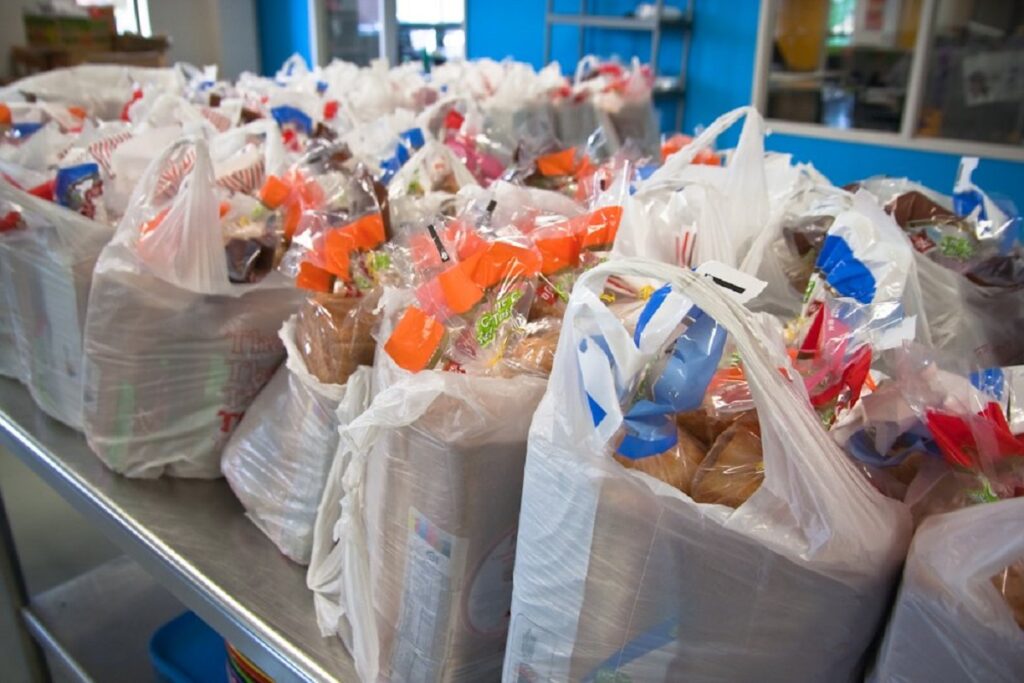
Single-use plastics deserve their bad wrap (pun intended). Plastic is in our clothing, bedding, food, cars, and homes. People recycle 15% of plastics, and only 9% is repurposed; there is still a massive 6% that is unaccounted for. We know that 85% is building mountains in landfills and unregulated dumping grounds.
What will future archeologists think when they unearth these plastic tombs? I think it’s something like, what the ….!
In a Single Second, 160,000 Plastic Bags Are Used Globally (World Counts)
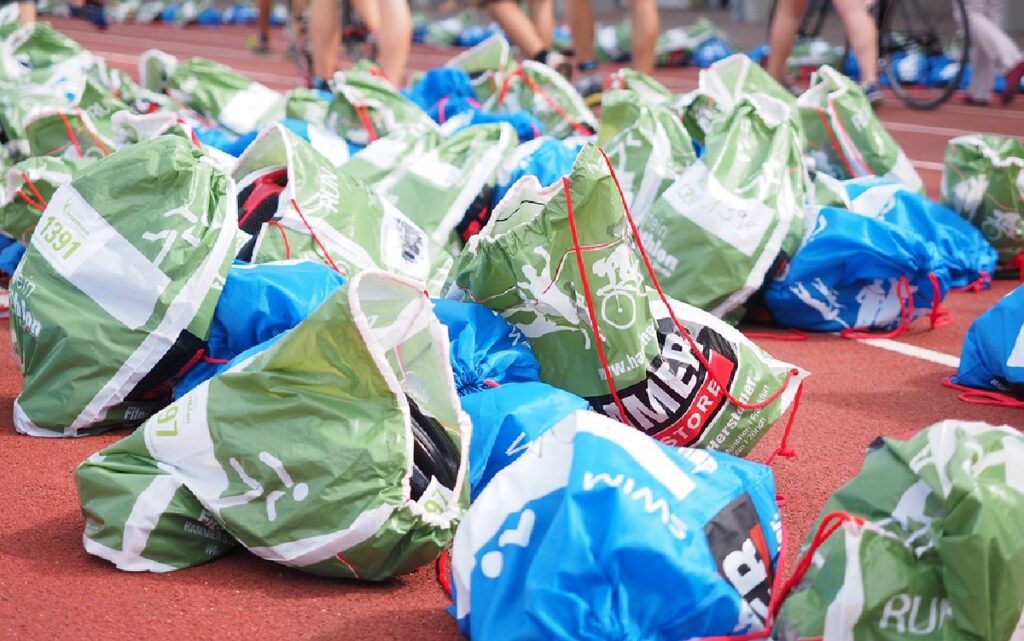
This year, 5 trillion plastic bags will be used – that’s 160,000 every second! We’ve become an anti-plastic bag society, but the USA doesn’t have a national plastic bag ban. A handful of states have worked to eliminate plastic bag pollutants for over a decade.
The Average Usage Time of Each Plastic Bag Is Just 12 Minutes (World Counts)
Every day we carry our goods home in plastic bags and put them into the rubbish 12 minutes later. However, some people repurpose plastic bags as trash bags.
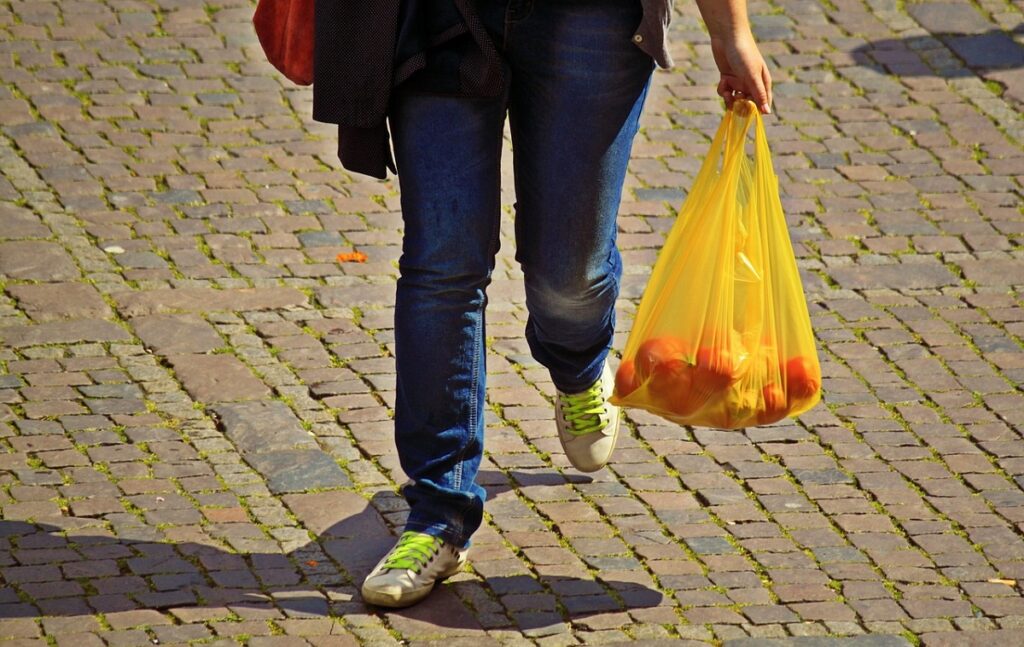
Every minute almost 1 million plastic bottles are purchased (The Guardian)
Experts predict that number to have increased by 20% by 2021. Recent data from The Guardian shows a sharp rise in plastic bottle consumption. Over half a trillion bottles are projected to be sold yearly by the decade’s end.
Approximately 98% of First-Time-Use Plastic Items Are Derived From Fossil Fuels (UNEP)
Fossil fuels make our lives easy and comfortable, as do plastics. It’s become difficult to evade plastic products. The stuff is everywhere, and virgin feedstock plastics contribute to our economy and affect climate change.
Microplastics enter our bodies through skin absorption, breathing, and accumulation. If you think you’re safe, a study now proves a direct link to genital abnormalities in baby boys.
Less Than 10% of the Plastic Produced in Regenerated (UNEP)
Well, plastic is knocking down our front door. We can’t outrun it, and naysayers can’t see the connection between climate change facts and plastic pollution.
Of course, other factors contribute to climate change, but when humans only reuse less than 10% of a product that never goes away, it’s problematic.
The Annual Value Lost in Plastic Packaging Waste During Sorting and Processing Is Estimated at US$ 80–120 Billion (UNEP)
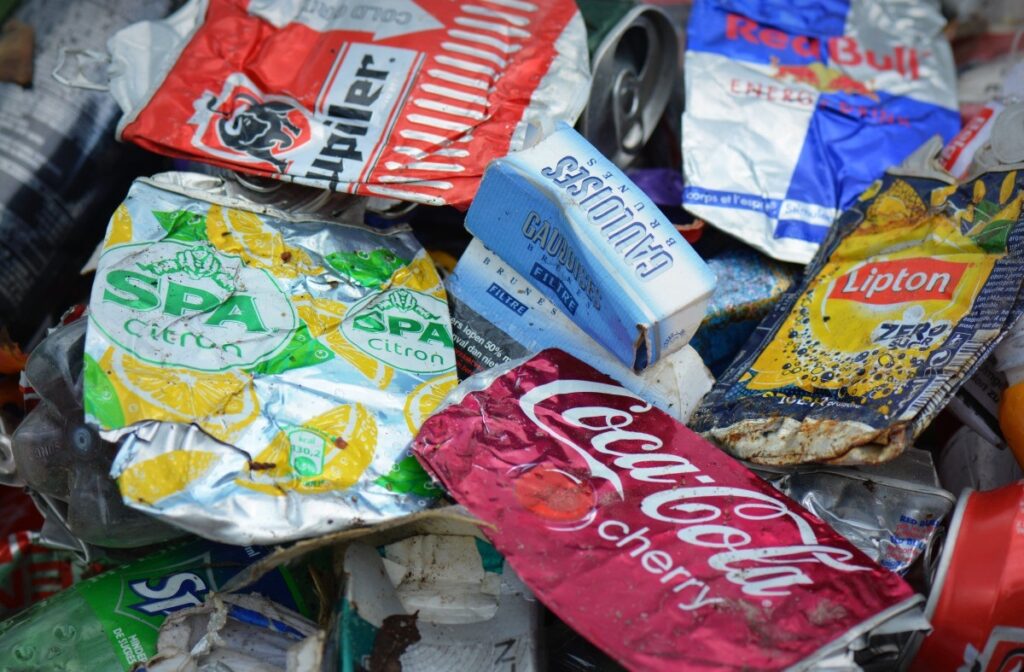
Experts predict that unless we rethink plastic packaging material and how we use and recycle, that shallow 9% of recycled plastics will increase to 30%. It will never be reused and impact our food chain and marine life negatively.
How Much Trash Is in the Ocean
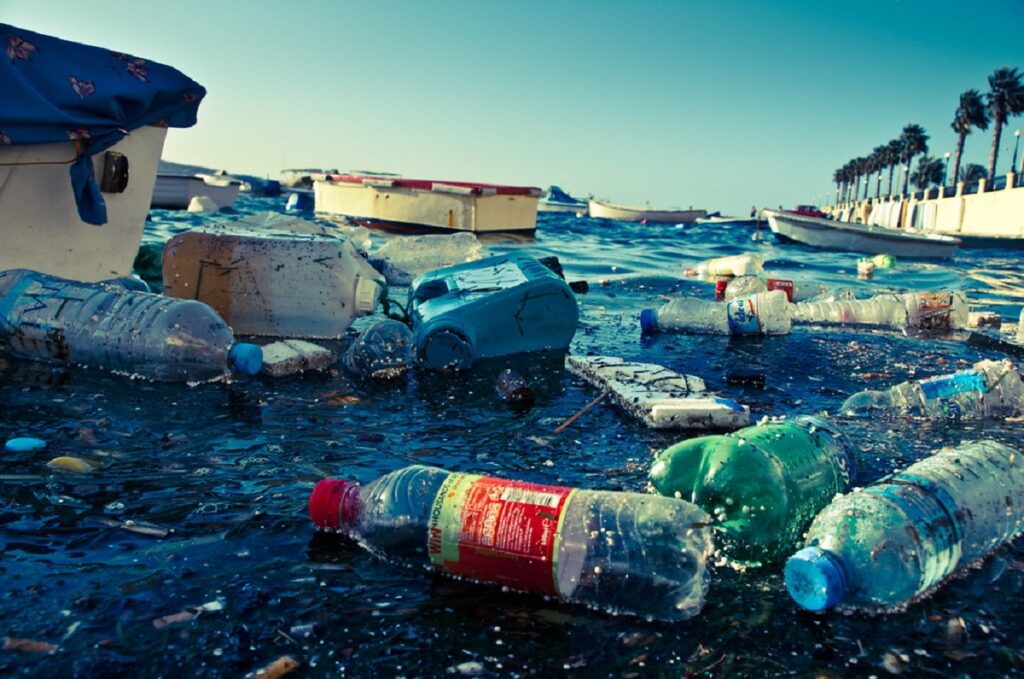
If you want to be humbled, stand on the shores of an ocean. They’re breathtakingly beautiful. Yet, we’re dumping plastic into its vastness like it’s a giant toilet and contributing to ocean pollution by the second.
Every Single Minute a Truckload of Trash Is Dumped in Oceans (Weforum.org)
Our WAF team constantly shares vital stats and relevant articles about polluted lakes in the US and what causes extinction, and other topics. It’s unfathomable that we dump trash and plastic products into our lakes, rivers, and oceans as our landfills burst.
Private groups like Ocean CleanUp are driving change with little government help.
Globally Almost 73% of All Beach Litter Is Plastic (National Geographic)
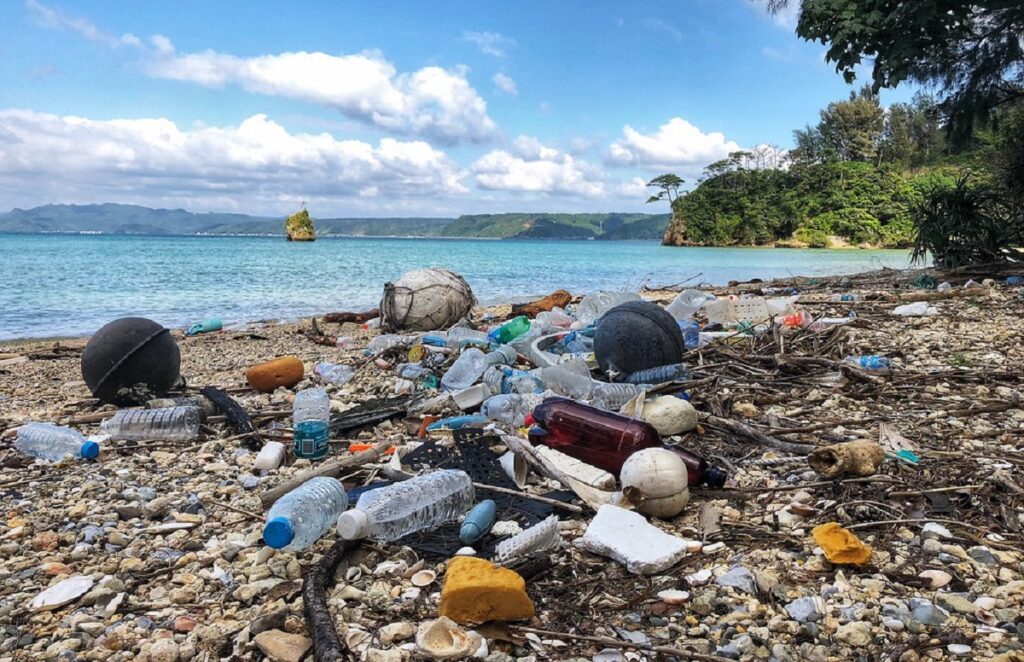
Anyone who’s ever been to the beach has come across the vagrant flip-flop washed ashore, its owner perhaps a million miles away. Fans of National Geographic might have already read that 5 trillion bits of plastic are drifting across the waves of every marine surface.
Stats Reveal by 2050; There Could Be More Plastic Than Fish in the Ocean (Weforum.org)
According to World Atlas, there are 3,500,000,000,000 fish in the ocean (2017), from 18,000 species, which means we’re 70% there.
Fun Fact: There are 2.14 sextillion stars in our Universe (1000 trillion/sextillion).
It Is Believed by 2050, 99% of Seabirds Will Be Ingesting Plastic (Science Daily)
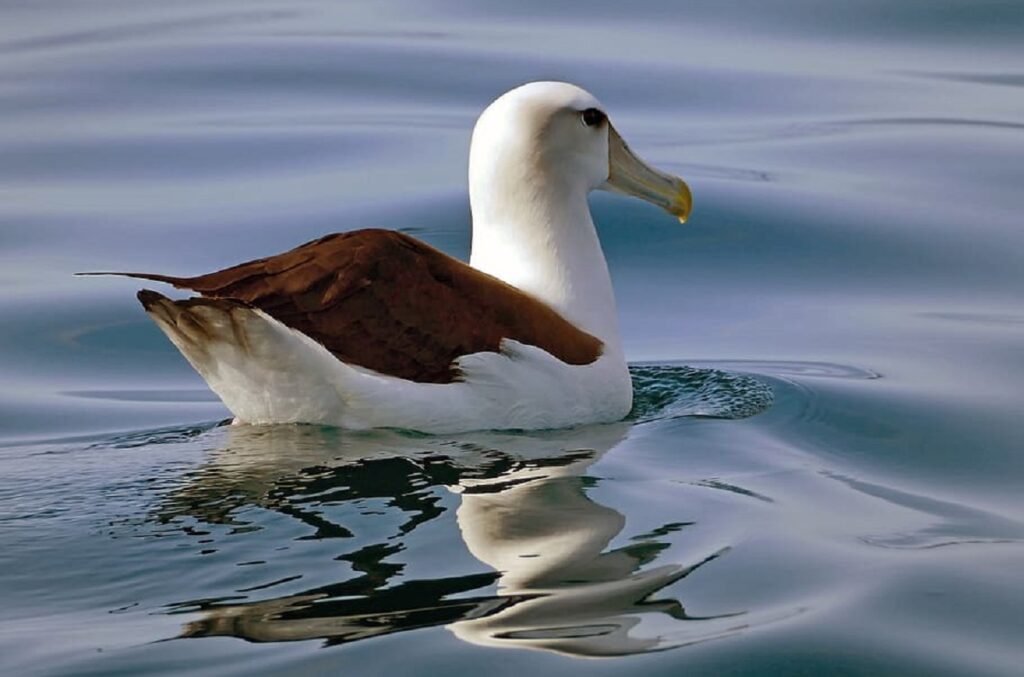
One of my favorite sounds is hearing a seagull screech. These swift avians don’t mind snatching food from our hands or scavenging from trash cans. When plastic consumption was still in its infancy in the 60s, researchers found 5% of seabirds in the study already had plastic components in their stomachs.
By 2010, that number reached 80%, which will reach 99% by 2050.
About 17% of Plastic-Affected Ocean Species Are on the IUCN Red List (Science Direct)
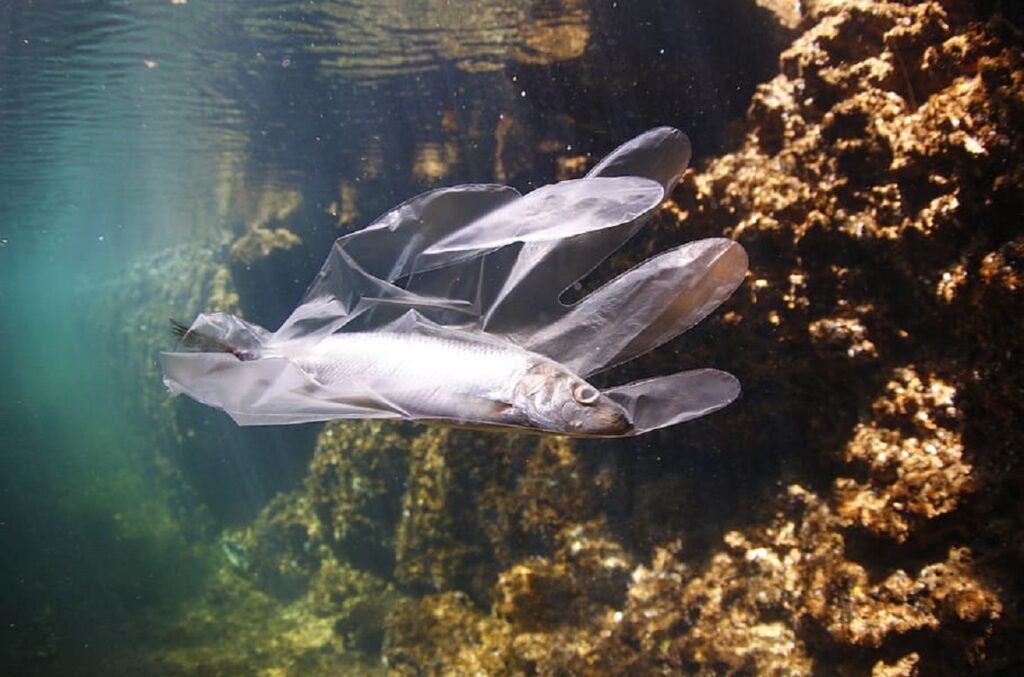
Plastic pollution is sad and avoidable. Experts and scientists are pointing to telltale figures, and we still drum our fingers. The IUCN Red List (formed in 1964) revealed that 17% of animals trapped in fishing nets or affected by ingestion are already on the threatened or near threatened list.
Marine detritus, flotsam, and anthropogenic stressors can devastate sea animals. The fishing industry is a major polluter that harms marine wildlife around the world.
Facts About Plastic in the Ocean
It’s out there. Plastic pollution is filling up our oceans. That’s a fact and not fake news.
Almost 80% of All Marine Pollution Is Attributed to Plastics (UNESCO)
Many cities along the coast used the ocean as a giant toilet. Some still do. But the biggest crime committed against our oceans is plastic pollution at 80%. So aside from sewage, oil spills, and toxic chemicals, our seas are full of marine plastic pollution.
“One person, no matter how insignificant, canchange the world for the better by taking action.” (Mathilda D’silva)… That’s you and me!
Almost 75 to 199 Million Tonnes of Plastic Is Present in Oceans (UNEP)
Our beautiful planet is a living network of trees, rivers, lakes, and animals. When we litter, our trash gets carried away by rainwater. Litter ends up in a nearby waterway that hears the call of the ocean, where it eventually ends up.
While rivers and lakes feed this trash into our oceans, they’re not responsible. We are!
Philippines Add 36% of the Global Plastic Waste in the Ocean (Our World in Data)

We all like to lay blame for the world’s political and economic problems. The Philippines are in the news for many reasons: monsoons, politics, human rights violations, etc. Filipinos are hard-working people, but why are they responsible for 36% of global plastic waste in the ocean?
Filipinos are drowning in plastic waste.
Roughly 1,000 Rivers Contribute to Nearly 80% of the Yearly Plastic Pollution in the Ocean (UNEP)
Actually, it isn’t rivers that contribute to 80% of plastic pollution. It’s people who dump riverine plastic emissions of 0.8 million to 2.7 million tons into the oceans through the river system.
About 90% of Ocean-Bound River Plastic Comes From 10 Rivers (ACS Publications)
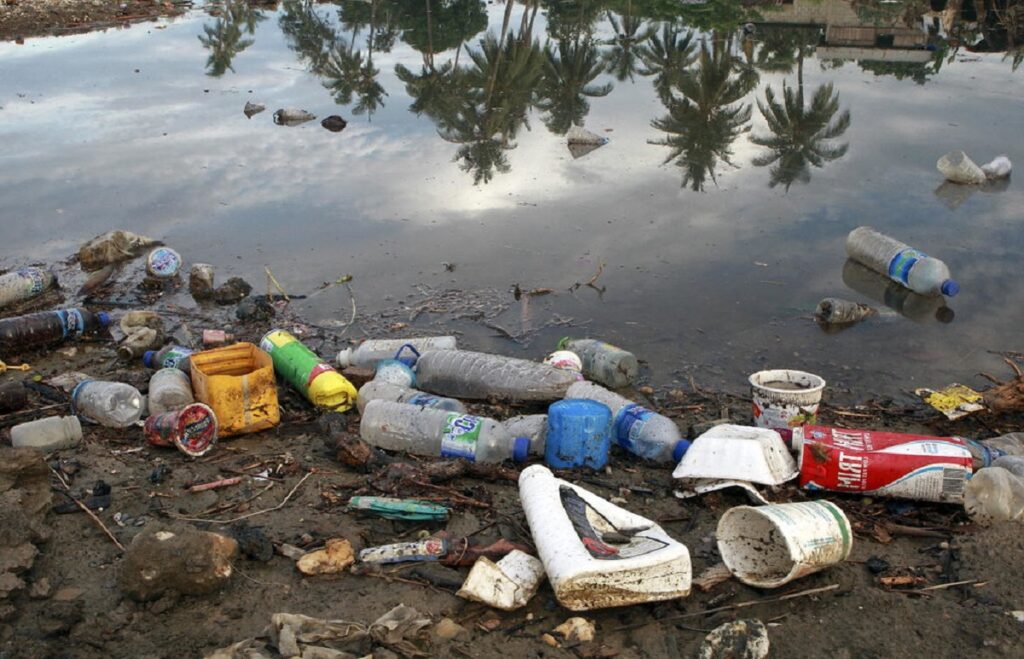
Don’t take comfort that these 10 rivers aren’t on your doorstep but in Asia and Africa. These rivers and the Amazon carry our plastic pollution to the oceans. However, research has proven that these formidable rivers thought to contribute the most waste are outpaced by others.
Former top 10: Yangtze, Indus, Yellow, Hai He, Ganges, Pearl, Amur, Mekong, Nile, and Niger deliver a significant portion of plastic waste to the ocean.
Real culprits: Pasig (Philippines) 6.43%, Klang (Malaysia) 1.33%, Ulhas (India) 1.33%, Tullahan (Philippines) 1.33%, Meycauayan (Philippines) 1.23%, Pampanga (Philippines) 0.95%, Libmanan (Philippines) 0.72%, Ganges (India) 0.63%, Rio Grande de Mindanao (Philippines) 0.54%, Agno (Philippines) 0.47%.
Draining 40% of the US, the Mississippi River Becomes a Route for Litter To Reach the Gulf of Mexico and the Ocean (UNEP)
Our marine environment is under constant strain. Marine debris arriving from 40% of American river systems flush through the vast Mississippi River drainage network and other significant tributaries that deposit plastic pollution and a cocktail of chemicals into the Gulf of Mexico, feeding into the ocean.
A staggering 11 million metric tons of plastic waste is deposited into our oceans.
The Pandemic of COVID Added Almost 25,900 Tonnes of Plastic to Our Oceans (the Guardian)
The pandemic was difficult to bear, including for our waterways and oceans, which picked up nearly 26,000 tonnes of additional single-use plastics. It’s not uncommon to see waterfowl sporting discarded masks and disposable gloves ballooning in our lakes and rivers.
Plastic Pollution Statistics
We all know people who don’t care about plastic pollution because they believe it doesn’t impact them directly. But it does. Eventually, plastics will haunt us as we dig for food sources, and we’ll unearth plastic trash instead of potatoes. It might sound apocalyptic, but food shortages are already crippling food-insecure people, and inflation is just the first sign.
Additives in Plastic Increase Their Life by 100 Years (National Geographic)
Most of us are guilty of using or not reusing plastic items. Plastics have evolved from brittle resins to chemically treated plastics with BPA to make them even more durable. It’s estimated that it takes anywhere from 400 to 1000 years for plastics to decompose. Plastic doesn’t vanish. Instead, it becomes microparticles in our food and environment.
Annually Almost 100 Million Marine Animals Die From Plastic Pollution (Flushgate)
Animals are dying from our negligence. Estimates suggest that 100 million animals from 1000 species die from plastic pollution. Sea turtles, fish, and marine mammals like seals, whales, dolphins, and seabirds die from the pollution effects.
Almost 100,000 Animals in Oceans Die From Plastic Entanglement Annually (Condor Ferries)
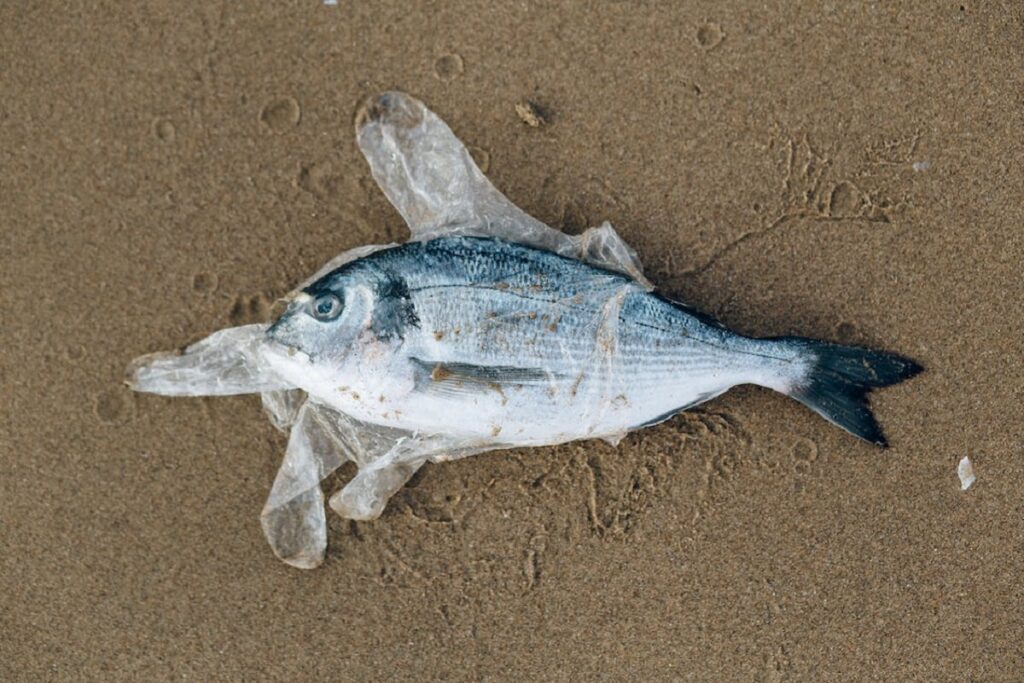
North Pacific fish ingest around 12 to 14 thousand tons of plastic yearly. Statistics also peg the number of animals entangled by litter at 100,000. These numbers mean that 1 in 3 marine mammals die being entangled in the garbage that we carelessly discard. Further, 650,000 mammals die as bycatch.
100% of Mussels Tested Showed the Presence of Microplastics in Them (Science Direct)
The next time you serve delectable mussels to your family and friends, you’re feeding them mussels seasoned with 50% microplastics and peppered with 37% rayon and cotton fibers. Delicious!
Almost 40 Pounds of Plastic Is Consumed by Humans During Their Lifetime (Global Issues)
Maybe you’ve overheard someone recently say that any particular food doesn’t taste as good as it used to. Well, most of us are involuntarily eating 5 grams of microplastics. When you multiply that over a lifetime, you’re up to 18 Kg.
From Plastic-Related Diseases, a Person Dies Every 30 Seconds (Tearfund)
Stats about plastic pollution are overwhelming, and they affect our ecosystem, our land, wildlife, and human health. Developing nations feel this effect even more as nearly one person dies every 30 seconds from directly related plastic or waste material pollution.
Burning landfills cause breathing issues and lead to many health problems. Countries with poor infrastructure and limited means burn rubbish, including plastics, from the world’s single-use plastic producers like Coca-Cola, Nestle, Pepsi, and Unilever.
By 2050, Plastic Production and Disposal Might Emit As Much Greenhouse Gas As 615 Coal Plants (Ciel.org)
Society is constantly bashing the oil and gas industry, coal mining, and fisheries for decimating our oceans and land. However, our insatiable greed for plastic and its incineration means the plastic industry creates 2.8 gigatons of CO2 yearly.
These emission figures equal 615 coal plants that deliver 500-megawatt coal plants and eventually build up in our atmosphere.
As per Stats of 2020, Coca-Cola Is the World’s Top Plastic Polluter, Producing 2.9 Million Metric Tonnes of Plastic Packaging Yearly (Changing Markets Foundation Report – Talking Trash)
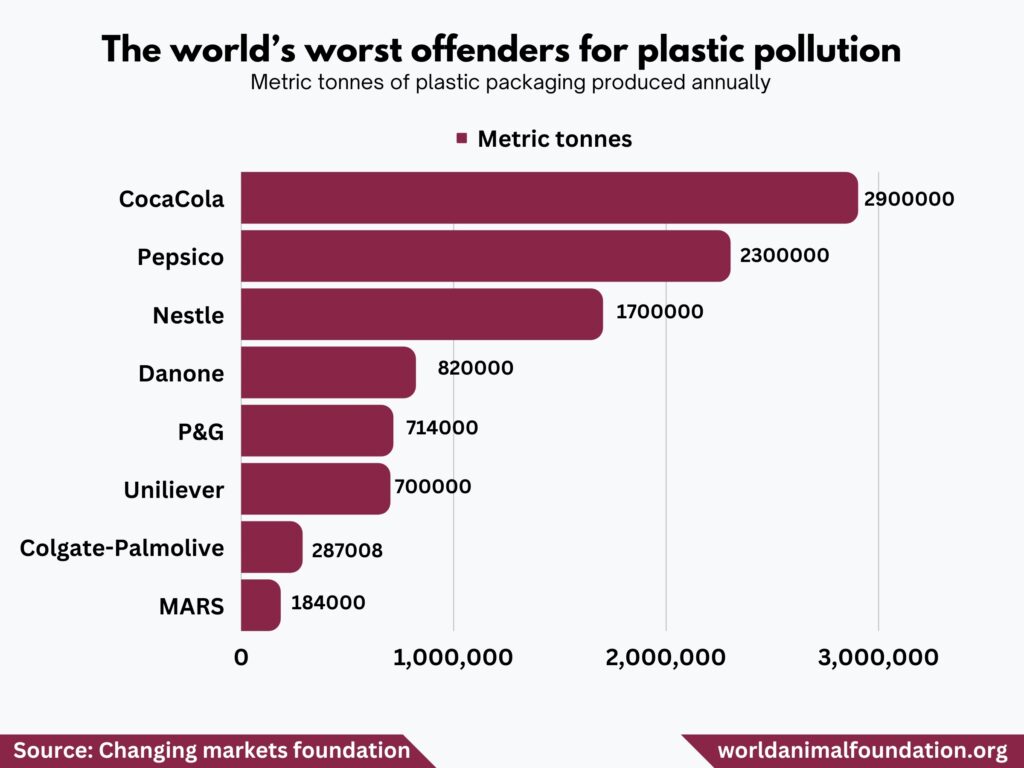
Coke is a renowned brand that infiltrated even the poorest countries. Coca-Cola single-handedly produces the most significant volume of plastic worldwide at nearly 3 million metric tonnes. So don’t have a Coke today. Instead, taste the feeling by picking litter in your local park or ditch. Pepsi, though you lost the cola war, you’re no slouch.
Bottled Water Production Uses 6 Times More Water Than the Bottle Holds (NPR)
Bottled water has its place in our world. We need water to survive, and in disaster zones or areas with poor drinking water quality, clean water is essential. Our bottled water and beverage containers leave a giant footprint on the environment. It takes 3 liters of water to produce half a liter.
It Is Believed by 2030, Plastic Will Release More Greenhouse Gases in the US Than Coal (Beyond Plastics)
Perhaps you’ve heard the saying that if every person on Earth lived as lavishly as North Americans, we would need eight planets to keep up. Experts predict that plastic use and plastics produced will emit more emissions than the coal industry by 2030, and everyone knows coal impacts the environment.
Plastic Pollution Coalition
Plastic is here to stay, and 99% is made from fossil fuel and finds its way into our blood and placentas.
We rely so much on this unchecked product that we’re set to quadruple our production by 2050 (instead of reducing it).
Millions of animals from every species are harmed or killed by plastics. That’s on us! Microplastics and nano plastics are in our food and bodies.
Plastic pollution isn’t just an issue that affects our oceans, ecosystems, and animals. It’s impacting low-income groups and creates racism and classism. The socio-economic disparity exposes these people to air pollution from landfills, incinerators, and industrial and agricultural waste that infiltrates their soil and water.
How to Stop Plastic Pollution
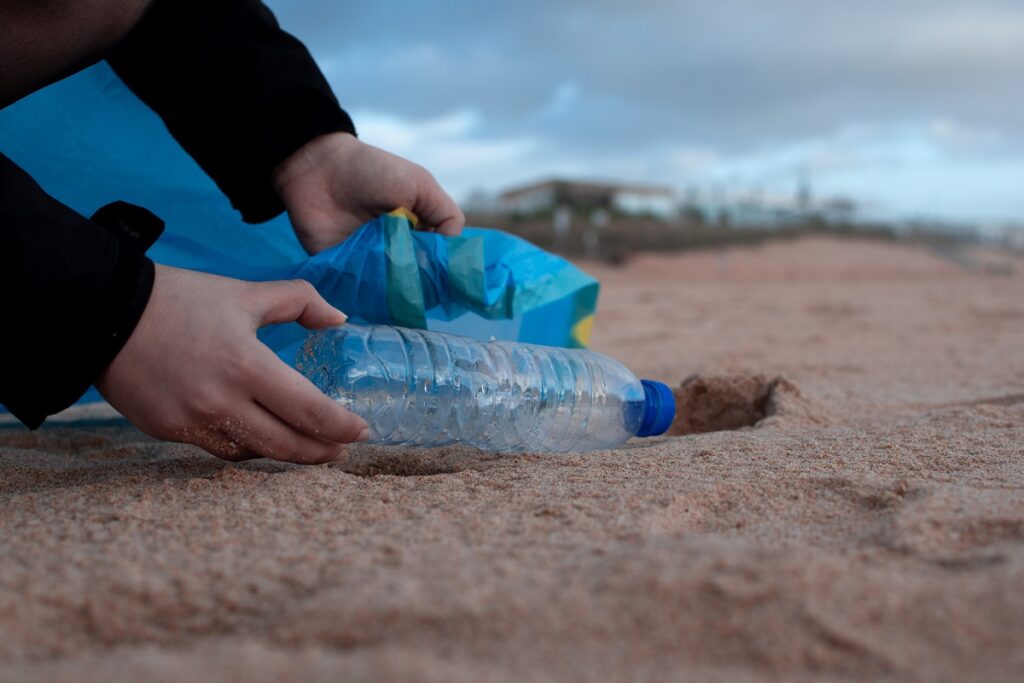
We are the difference. If everyone contributes, we can impact plastic pollution facts while we wait for governments to regulate plastic pollution and the plastic industry.
Small changes go a long way:
- Learn about what littering does to our environment
- Use bar soap instead of body wash
- Consume and buy fewer packaged products
- Drink filtered or tap water
- Prepare your own meals from fresh local food
- Shop second hand
- Recycle
FAQs
How Much Plastic Goes Into the Ocean Every Year?
Over 400 million tons of plastic, including a trillion plastic bags, invade our quality of life. At least 14 million tons of plastic end up in the ocean every year, and plastic makes up 80% of all marine debris found from surface waters to deep-sea sediments.
How Much Plastic Is Produced Each Year?
We produce 400 million tons of plastic yearly.
How Many Plastic Bags Are Used Each Year?
Well, it’s a shocking 500 billion plastic bags worldwide or one million bags per minute. It takes a person roughly 32 years to count to 1 billion—just saying.
How Many Plastic Bags Are in the Ocean?
Estimates suggest that 10% of plastic bags end up in the ocean. Over 300 million plastic bags end up in the Atlantic. Do the math, 10% of 5 billion is 500 million. No one is counting.
What Causes Plastic Pollution?
Although it’s complicated, plastic pollution is predominately caused by careless littering, like food wrappers, soda and water bottles, plastic bags, and other discarded products.
How Does Plastic End Up in the Ocean?
Litter, carelessness, illegal dumping, poverty, poor infrastructure, and bad waste management systems are the big culprits. Rainwater and wind propel plastic garbage into our rivers, lakes, and drains and eventually end up in the ocean.
How Does Plastic in the Ocean Affect Humans?
It’s killing us. Plastic is a carcinogenic material that affects and kills millions. It’s also a major contributor to climate change which is destroying forests by fire, agriculture through drought and floods, and decimating marine life populations.
Conclusion: Plastic Pollution Impacts You and Me!
When people discuss the million tons of plastic pollution, it makes many uncomfortable. Our marine environment is saturated by plastic debris, and carbon dioxide from fossil fuel is killing our planet. Shorelines are strewn with beverage containers like discarded plastic water bottles and soft drink containers like Coca-Cola.
The fatal image that shook my world was the carcass of a whale on the beach in El Cerrito, Baja Sur, Mexico. It died wrapped in nylon fishing cords.


